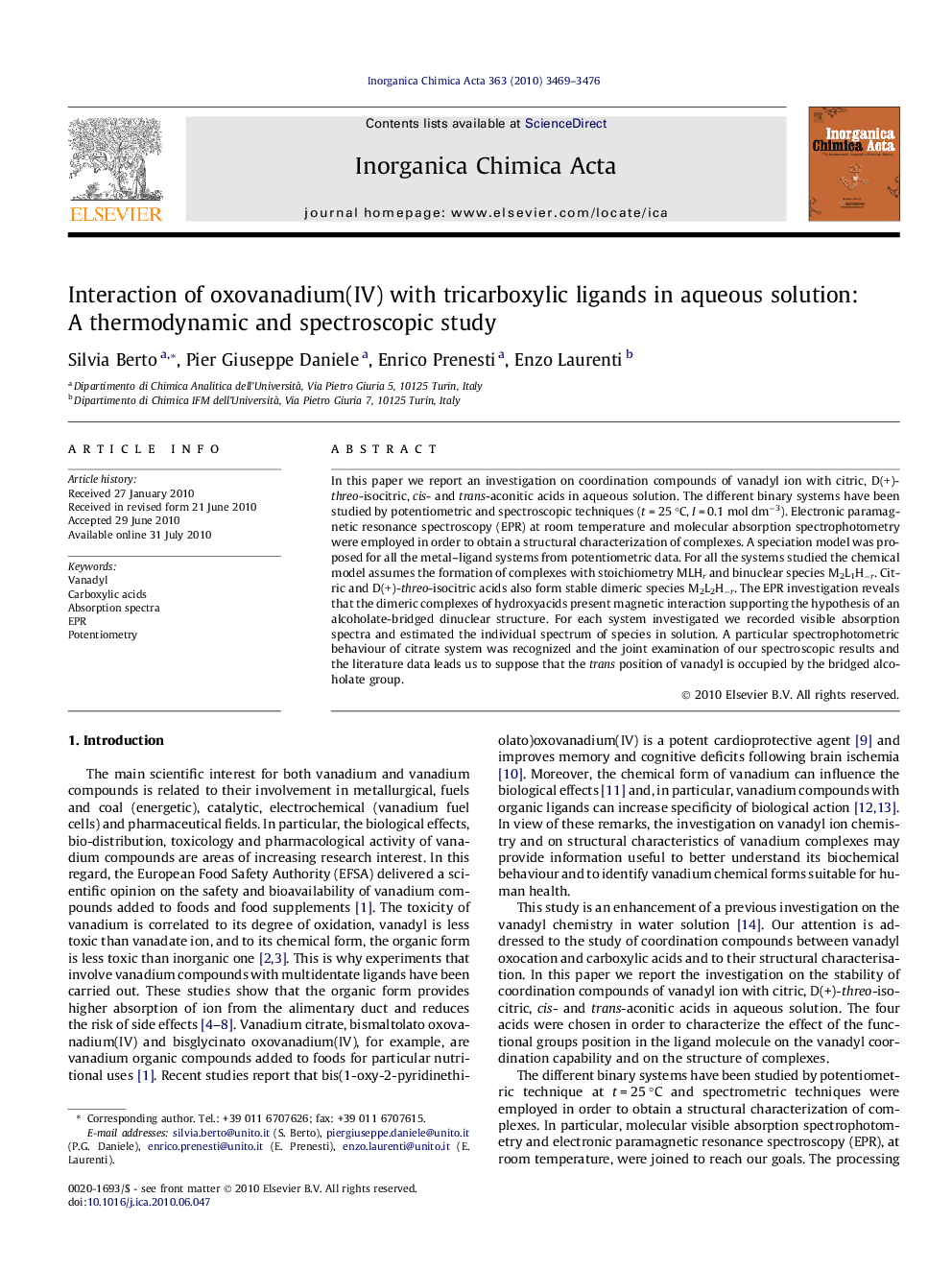| Article ID | Journal | Published Year | Pages | File Type |
|---|---|---|---|---|
| 1311196 | Inorganica Chimica Acta | 2010 | 8 Pages |
In this paper we report an investigation on coordination compounds of vanadyl ion with citric, D(+)-threo-isocitric, cis- and trans-aconitic acids in aqueous solution. The different binary systems have been studied by potentiometric and spectroscopic techniques (t = 25 °C, I = 0.1 mol dm−3). Electronic paramagnetic resonance spectroscopy (EPR) at room temperature and molecular absorption spectrophotometry were employed in order to obtain a structural characterization of complexes. A speciation model was proposed for all the metal–ligand systems from potentiometric data. For all the systems studied the chemical model assumes the formation of complexes with stoichiometry MLHr and binuclear species M2L1H−r. Citric and D(+)-threo-isocitric acids also form stable dimeric species M2L2H−r. The EPR investigation reveals that the dimeric complexes of hydroxyacids present magnetic interaction supporting the hypothesis of an alcoholate-bridged dinuclear structure. For each system investigated we recorded visible absorption spectra and estimated the individual spectrum of species in solution. A particular spectrophotometric behaviour of citrate system was recognized and the joint examination of our spectroscopic results and the literature data leads us to suppose that the trans position of vanadyl is occupied by the bridged alcoholate group.
Graphical abstractCoordination compounds of vanadyl ion with citric, D(+)-threo-isocitric, cis- and trans-aconitic acids, in aqueous solution, were studied by potentiometric and spectroscopic techniques (EPR and visible spectra). A speciation model and a structural characterization of complexes were proposed. The overall view of results highlights the relative weight of the functional groups position in the coordination capability and in the compounds structure.Figure optionsDownload full-size imageDownload as PowerPoint slide
